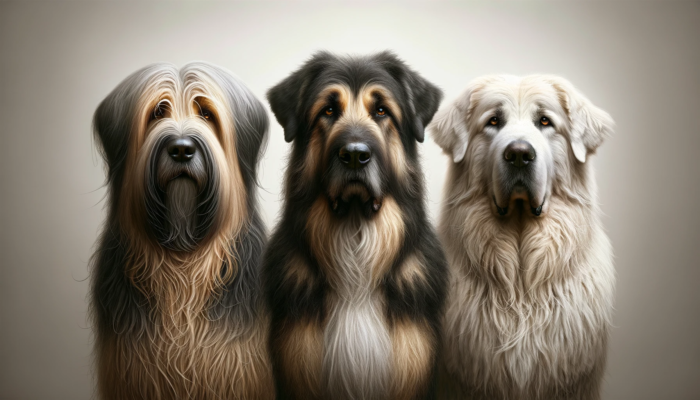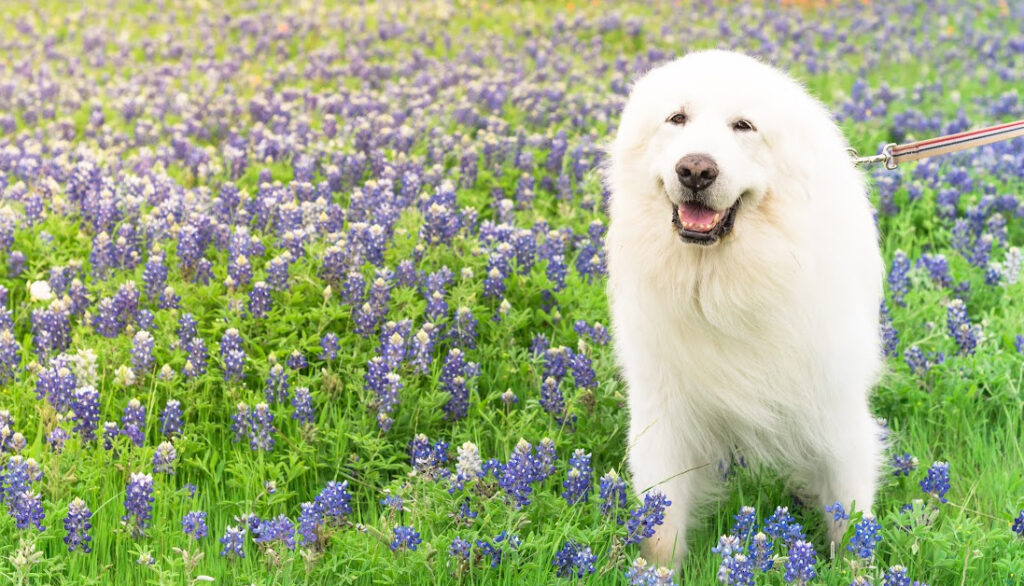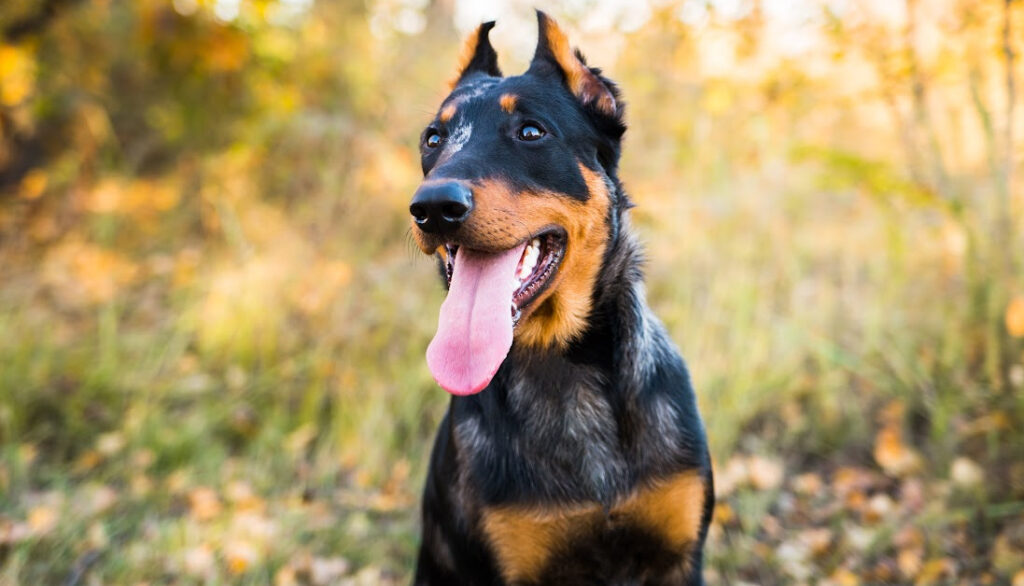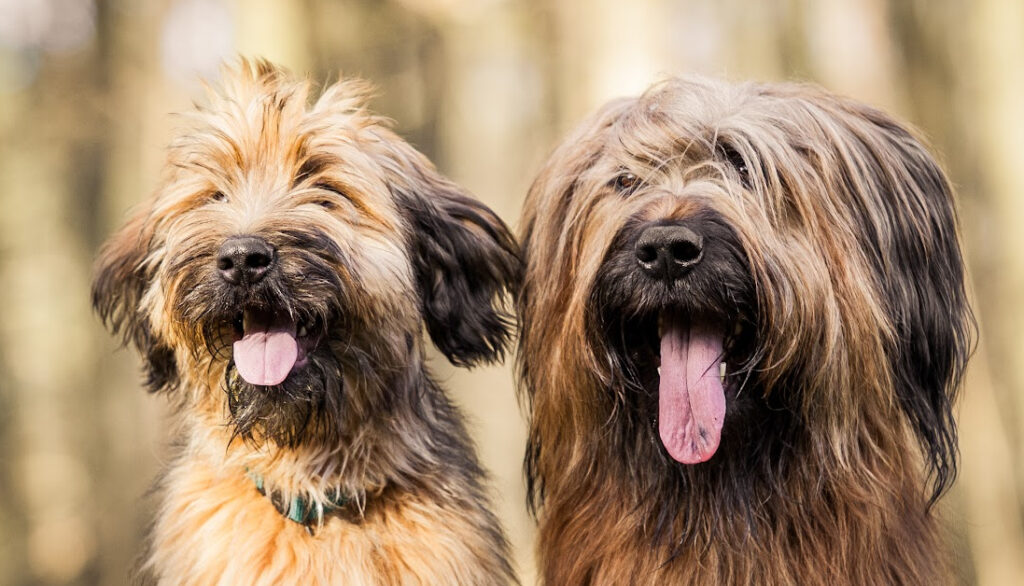Introduction to Double Dewclaws in Dogs
Welcome, fellow dog lovers! Have you ever noticed an extra claw on your canine friend’s leg? That’s called a dewclaw, and some dogs have not just one, but two of these on the same paw – a trait known as double dewclaws. It’s a fascinating feature that sparks curiosity and opens up a world of genetic mysteries and intriguing dog breed characteristics.

Understanding the Double Dewclaw Trait
Double dewclaws are essentially additional toes, complete with bone structure and all, situated higher up on a dog’s leg. They can be found on both the front and rear legs, but their presence on the rear leg is typically what distinguishes dogs with double dewclaws.
While some may dismiss double dewclaws as a mere cosmetic anomaly, for certain breeds, this unique trait is deeply intertwined with their breed standard and even their health.
Significance of Double Dewclaws in Canine Health and Breed Standards
For dogs with double dewclaws, this trait can serve functional purposes. In certain livestock guardian breeds, for instance, these extra “toes” provide dogs with better stability when navigating rough terrains and offer a better grip when wrestling down would-be predators.
Moreover, for certain breeds like the Great Pyrenees or Beauceron, the presence of double dewclaws is an essential part of their breed standard and history. They serve as a testament to their breed’s robust genetic heritage and workmanship.
The Genetic Mystery Behind Double Dewclaws
While the exact genetic mechanisms behind double dewclaws remain somewhat shrouded in mystery, it’s generally accepted that this trait is inherited. If a dog carries the gene for double dewclaws, it can potentially pass this trait on to its offspring. This genetic characteristic helps distinguish certain dog breeds and sets them apart from the rest of the canine kingdom.
So, if you’re looking to identify dog breeds with double dewclaws or wanting to learn more about them, buckle up! We’re going to dive into some of the distinctive breeds with this unique trait. From the majestic Great Pyrenees to the versatile Beauceron, the protective Anatolian Shepherd to the nimble Norwegian Lundehund, we’ll explore their histories, roles, and how these extra digits play a part in their lives.
Stay with us as we unravel the mysteries of double dewclaws and pay homage to the distinct dogs that don them!

The Genetic Mystery Behind Double Dewclaws
Ever wondered what lies behind the intriguing characteristic of double dewclaws in dogs? It’s like unfolding a suspenseful canine genetic mystery. So, let’s dive right in and uncover the secrets behind this fascinating trait.
The Role of Genetics in Dewclaw Development
Just like human traits, canine features such as dewclaws are largely dictated by genetics. Dewclaws, or the small claws located on the inner part of a dog’s foot, are present in various dog breeds. However, having double dewclaws — two dewclaws on the same paw — is a trait that is inherited.
Dogs are born with dewclaws, which form around the same time as the rest of their paw features in the womb. The double dewclaw trait is a result of a dominant gene, which means a puppy only needs to inherit this gene from one parent to have double dewclaws. However, the precise genes responsible for this characteristic remain an exciting enigma in canine genetics.
How Double Dewclaws Distinguish Certain Dog Breeds
You might be surprised to know that in the canine world, double dewclaws are more than just a cute quirk — they’re a mark of distinction for certain breeds. In fact, these seemingly decorative digits are an essential breed standard for some dogs, playing a key role in distinguishing them from others.
For instance, breeds like the Great Pyrenees and the Beauceron have double dewclaws as a breed standard. Notably, in these breeds, the presence of double dewclaws is so significant that their absence is considered a disqualification in dog shows!
But why would a dog need an extra claw, you ask? Well, it turns out, these additional claws may serve a purpose. For mountainous breeds like the Great Pyrenees, the double dewclaws can provide extra grip and stability when navigating rough terrain. For breeds like the Beauceron, they serve as a historical mark of their herding heritage.
So, if you have been curious about your canine companion’s extra claws, know that they are a key part of their breed identity. Moreover, they might even be putting these additional digits to good use, depending on their breed’s instinctual behaviors and ancestral roles.
Decoding the genetic mystery behind double dewclaws gives us a deeper appreciation for the diversity and complexity of our four-legged friends. So, the next time you glance at your dogs’ paws, remember, you’re not just looking at their feet; you’re glimpsing a fascinating tale of canine genetics and breed history.
Recognizing Breeds with Double Dewclaws
While all dogs have a dewclaw on the inside of their front legs, similar to a human thumb, not all possess the unique trait of double dewclaws. This feature is a fascinating aspect of canine genetics and is often an integral trait of certain breeds. Double dewclaws are essentially additional toes on the rear legs, located more proximally on the limb, which can aid in balance, traction, and stability in rough terrain.
Notably, double dewclaws are often breed-specific and are required according to breed standards for show dogs in some breeds. The American Kennel Club (AKC), for instance, specifies that certain breeds must retain their double dewclaws to compete. This recognition of double dewclaws as a breed trait showcases the genetic heritage and functional role of these secondary claws in specific dog breeds.
Comprehensive List of Canines with Double Dewclaws
Several dog breeds are known for possessing the distinctive feature of double dewclaws. These include:
- Great Pyrenees: This majestic breed is perhaps one of the most known for its double dewclaws, which are characteristic and standard for the breed. Great Pyrenees use these additional claws for stability and grip while maneuvering mountainous terrains.
- Beauceron: Known for their versatility and herding prowess, Beaucerons carry double dewclaws that assist them in their work, offering extra stability and traction.
- Anatolian Shepherd: Another breed recognized for their double dewclaws is the Anatolian Shepherd. These guardian dogs use their extra toes for effective livestock protection and mobility.
- Briard: The Briard, a French herding dog, also features double dewclaws. These functional claws help them in their herding duties, allowing for better grip and control.
- Norwegian Lundehund: Not only does this breed sport double dewclaws, but it is also known for having six toes on each foot. The extra toes, including the double dewclaws, contribute to the Lundehund’s exceptional flexibility and climbing abilities.
- Saint Bernard: The gentle giant of the canine world, Saint Bernards, are yet another breed with double dewclaws. These extra claws aid them in their mountain rescue operations.
- Estrela Mountain Dog: A rare breed, the Estrela Mountain Dog, is an adept flock guardian with double dewclaws that contribute significantly to their mobility in keeping with their working role.
The Great Pyrenees: A Majestic Breed with Double Dewclaws
The Great Pyrenees, known for its regal presence and protective instincts, has a unique physical trait that sets it apart from many other dog breeds — double dewclaws on its hind legs. This breed is steeped in history, and its unique features are not just cosmetic but serve a practical purpose.
The History and Origin of the Great Pyrenees
The Great Pyrenees’ roots can be traced back to the Pyrenees mountains between France and Spain. Historically, these dogs were used as livestock guardians to protect sheep from predators like bears and wolves. Their physical features, including their double dewclaws, are a testament to their working heritage. It’s thought that the breed dates back as far as 3000 B.C., making it one of the oldest dog breeds known to man.
Double Dewclaws as a Breed Characteristic in the Great Pyrenees
Unlike most dogs, which have a single dewclaw on the inside part of their leg, the Great Pyrenees sports two sets of dewclaws on each hind leg – a feature that is a distinctive breed characteristic. These double dewclaws are not accidental but are a result of careful breeding over generations.
While some may view these double dewclaws as superfluous, they serve a purpose for this breed. The double dewclaws provide extra stability when the Great Pyrenees is working in rough, mountainous terrain. They help the dogs to turn quickly or hold their ground when necessary. Essentially, they function as a sort of ‘snow shoe,’ preventing the dogs from sinking into the snow while they are performing their guardian duties.
In breed standards set out by the American Kennel Club (AKC), the Great Pyrenees’ double dewclaws are an essential characteristic. The AKC breed standard states that “All Great Pyrenees have a double dewclaw on each hind leg.” Any Great Pyrenees without this trait would not meet the breed standard.
The double dewclaws on a Great Pyrenees aren’t just a fascinating quirk of the breed. They’re a reminder of the rich history of these dogs and the rugged, mountainous landscapes they were bred to work in. So, next time you see a Great Pyrenees, take a moment to appreciate not only their majestic beauty but also their distinctive double dewclaws, a testament to their unique heritage.
As a dog parent, it’s essential to understand that these double dewclaws should not be removed. They are deeply rooted and not merely hanging by the skin like in some other breeds. Their removal could potentially harm the dog and cause unnecessary pain.

The Beauceron: A Versatile Herder with Distinctive Paws
When you think about dog breeds with double dewclaws, one breed that stands out is the Beauceron. This breed is known for its versatility, intelligence, and unique physical feature – the double dewclaws.
Exploring the Beauceron’s Working Heritage
Originating from France, the Beauceron is a breed that has been used for centuries as a herding and guard dog. They are known for their intelligence, agility, and strength, which made them excellent for herding sheep and cattle. The Beauceron’s working heritage is deeply ingrained in its character, making it a highly trainable and obedient breed.
The Beauceron’s history is steeped in rural French tradition. They were bred to work in all types of weather and terrain, which contributed to their robust and hardy physique. Their versatility extends beyond herding; these dogs were also used during World Wars for tasks such as delivering messages, detecting mines, and tracking.
The Importance of Double Dewclaws in the Beauceron Breed
One of the distinctive physical features of the Beauceron is their double dewclaws on their hind legs. These are not just for show, but they serve a practical purpose.
- Increased Stability: The double dewclaws provide extra stability when the Beauceron is working in rough terrain. They act like a ‘thumb’ that helps the dog to navigate and balance effectively.
- Traction and Grip: When running at high speeds or making sharp turns, the double dewclaws help the Beauceron maintain grip and prevent slipping.
- Herding Capability: These additional claws are believed to aid in the Beauceron’s herding capabilities, allowing them to control and move livestock with more precision.
For the Beauceron breed, the double dewclaws are not just a unique feature but a breed standard. In fact, according to the American Kennel Club (AKC), a Beauceron without double dewclaws on the hind legs is considered a fault.
In conclusion, the Beauceron is a remarkable example of the dog breeds with double dewclaws. This breed’s unique physical feature is not just a fascinating genetic trait but a testament to their working heritage and functionality. Whether it’s herding livestock or navigating rough terrain, the Beauceron’s double dewclaws play an integral role in their agility and performance.
When caring for a Beauceron, it’s essential to regularly check and maintain their double dewclaws to ensure they remain healthy and functional. Regular grooming, including nail trimming, can help prevent issues such as injury or infection. As always, if you have any concerns about your dog’s health, it’s best to consult with a veterinarian.
The Anatolian Shepherd: A Guardian Dog with a Notable Trait
When discussing dog breeds with double dewclaws, the Anatolian Shepherd’s name comes up frequently. This robust breed hails from Turkey and is known for its exceptional guarding and protective instincts. But, these dogs don’t just stand out for their impressive size and work ethic. They are also among the few breeds that possess double dewclaws, an interesting trait that serves a unique purpose for these animals.
The Anatolian Shepherd’s Role in Livestock Protection
Anatolian Shepherds were bred to protect livestock from predators in the harsh Anatolian Plateau. These dogs are incredibly strong and fearless, able to fend off wolves and bears to safeguard their charges. With their excellent agility and speed, they are well-equipped to navigate the challenging terrains of their native land.
Their size and strength are not the only features that assist them in their duties. The Anatolian Shepherds’ double dewclaws also play a significant role in their ability to protect livestock.
How Double Dewclaws Benefit the Anatolian Shepherd
Double dewclaws may appear to be an oddity in dogs, but for breeds like the Anatolian Shepherd, they serve useful purposes. So what exactly is the benefit of having these extra claws?
Firstly, the double dewclaws provide additional stability when navigating rough terrains. The Anatolian Plateau is rocky and rugged, and the extra dewclaws help these dogs maintain their balance and maneuverability on such landscapes.
Secondly, these dewclaws aid in preventing injuries. When an Anatolian Shepherd is engaged in a skirmish with a predator, the double dewclaws act like an extra pair of thumbs, giving the dog a tighter grip and better control over the situation.
In conclusion, the Anatolian Shepherd’s double dewclaws are far from being just an aesthetic feature. They are, in fact, a functional adaptation that enhances the breed’s working capabilities. The presence of these dewclaws is so integral to the breed that the lack of them is considered a fault in show dogs.
So, if you are a proud parent of an Anatolian Shepherd, remember that those extra claws are not just unique but also symbolize the breed’s rich heritage and working history. And, of course, never forget to take good care of them, because your dog’s health and comfort are inevitably linked to their well-being.

The Briard: A French Herding Dog with Double Dewclaws
If you’re a fan of French culture, you’ll be delighted to know about the Briard, a breed that’s as French as baguettes and berets. This dog breed is renowned for its distinctive double dewclaw trait, which adds an intriguing layer to its mystique. But there’s much more to Briards than just this unique paw feature. Let’s explore this breed’s rich history and understand the functionality of their double dewclaws.
The Briard’s Historical Significance in France
Briards have a long-standing connection with French history, tracing back to the 8th century. This breed earned their keep as herding and guard dogs, protecting flocks from predators and thieves. Historically, Briards were known as the heart of French pastoral life, and they were even mentioned in records by Charlemagne and Napoleon.
These dogs are social, protective, and intelligent, making them great companions and working dogs. They are characterized by their long and wavy coats, large ears, and most distinctively, their double dewclaws. I’d love to delve into why these particular dog breeds with double dewclaws are so special.
The Functionality of Double Dewclaws in the Briard Breed
You might be wondering, “What’s the big deal about these double dewclaws?” Well, for Briards, these additional digits on their hind legs are not just for show. They serve a functional purpose, especially in relation to their historical roles as herding dogs.
Double dewclaws provide extra stability when a Briard is working on uneven terrain. While herding, these dogs often need to make quick turns and run at different angles. The double dewclaws act like a ‘thumb’, enabling Briards to get a better grip on the ground and maintain their balance during high-speed maneuvers. It’s a remarkable adaptation that highlights the agility and athleticism of this breed.
Furthermore, these double dewclaws are a breed standard for Briards. The Fédération Cynologique Internationale (International Canine Federation) stipulates that a Briard should have double dewclaws that form well-separated “thumbs” with nails, somewhat set high on the foot. So, if you see a Briard without double dewclaws, they might not be a purebred.
In summary, the Briard’s double dewclaws are not merely ornamental; they play a significant role in the dog’s mobility and workmanship. So next time you see a Briard, remember you’re looking at a dog breed that carries a unique blend of French history, work ethic, and distinctive physical traits.
Caring for a Briard requires regular grooming and nail care, including their double dewclaws. It’s essential to keep those extra nails trimmed to prevent discomfort or injury. Remember, a happy, well-groomed Briard is a sight to behold!
The Norwegian Lundehund: A Unique Breed with Extra Toes
If you’re a dog lover who’s interested in unique breeds, you’ve probably come across the Norwegian Lundehund. This breed, known for its exceptional climbing and hunting abilities, is as unique as it comes, mainly due to its unusual physical traits – among which are the double dewclaws.
The Norwegian Lundehund’s Adaptation for Puffin Hunting
Originating from the remote islands of Norway, the Lundehund was primarily used for hunting puffins – a type of seabird. These dogs are equipped with extraordinary physical characteristics that made them perfect for this task. The Lundehund is the only dog breed that has six toes on each foot, including two dewclaws. These extra toes and their incredible flexibility helped them navigate the steep, rocky cliffs where puffins nested.
These dogs also have incredibly flexible necks that can bend backwards to touch the spine, and ears that can close both forwards and backwards to protect from debris and dirt. But it’s the double dewclaws that truly set them apart from most other breeds.
Double Dewclaws and the Lundehund’s Exceptional Flexibility
The Lundehund’s double dewclaws are not just for show – they serve a practical purpose. These clawed digits provide extra grip and stability when they’re scaling rough terrains and narrow passages. This is especially crucial when hunting puffins, which often nest in hard-to-reach places.
These dewclaws are similar to thumbs in their functionality, providing the Lundehund with a better grip while climbing. It’s a combination of their double dewclaws and their overall flexibility that makes these dogs such exceptional climbers.
However, double dewclaws in the Lundehund, like in any other breed, require proper care to prevent any potential health issues. Regular nail trimming and occasional check-ups are crucial to ensure that the dewclaws are not causing discomfort or becoming a health hazard.
Wrap Up
So, there you have it – the incredible Norwegian Lundehund, a breed that redefines what we know about canine physiology. With their double dewclaws, they demonstrate amazing climbing skills, making them some of nature’s best puffin hunters. This feature, along with their overall flexibility and unique physical traits, makes them a fascinating breed to study and a delightful pet to have.
Remember, if you’re a proud parent of a Lundehund, or any dog with double dewclaws, this special trait needs your attention. Regular grooming and veterinary check-ups will ensure your four-legged friend can continue to enjoy a healthy, active life.
Isn’t it amazing how nature tailors each breed’s characteristics to suit its role? From the majestic Great Pyrenees to the agile Lundehund, double dewclaws add an extra layer of uniqueness to these already fascinating creatures. This is just another example of why we should celebrate the diversity and individuality found in the canine world!
Frequently Asked Questions
Q1: What are double dewclaws?
A: Double dewclaws are an additional pair of claws that are located on the inside of a dog’s leg, slightly higher than the rest of the paw. They are a unique trait found in certain dog breeds.
Q2: Which dog breeds typically have double dewclaws?
A: Breeds like the Great Pyrenees, Briard, and Saint Bernard are known for having double dewclaws. However, it’s not exclusive to these breeds and can occur in others as well.
Q3: Are double dewclaws a sign of purebred status?
A: Not necessarily. While double dewclaws are more common in certain purebred dogs, they can also appear in mixed breeds. It’s a genetic trait that can be passed down, regardless of breed purity.
Q4: Do double dewclaws serve a purpose?
A: There’s some debate about this. Some believe they help with stability and traction, especially in breeds that work in rugged terrains. Others believe they’re a vestigial trait with no real function.
Q5: Should double dewclaws be removed?
A: It depends. If the dewclaws are loosely attached, they could potentially get caught on something and cause injury, so removal might be recommended. However, if they’re firmly attached, many vets advise leaving them alone unless they cause problems.
Dr. Candy, a holistic veterinarian and certified raw dog food nutrition specialist, graduated from Oklahoma State University in 2009 with a DVM and has since specialized in companion animal nutrition, advocating for species-specific diets. With a background in wildlife rehabilitation and oil spill response, she combines holistic health and conventional medicine in her unique approach to treating chronic diseases, allergies, and autoimmune conditions in pets. As the owner of a veterinary practice in Colorado and an author, Dr. Candy is dedicated to educating pet parents and improving the health and happiness of animals.




